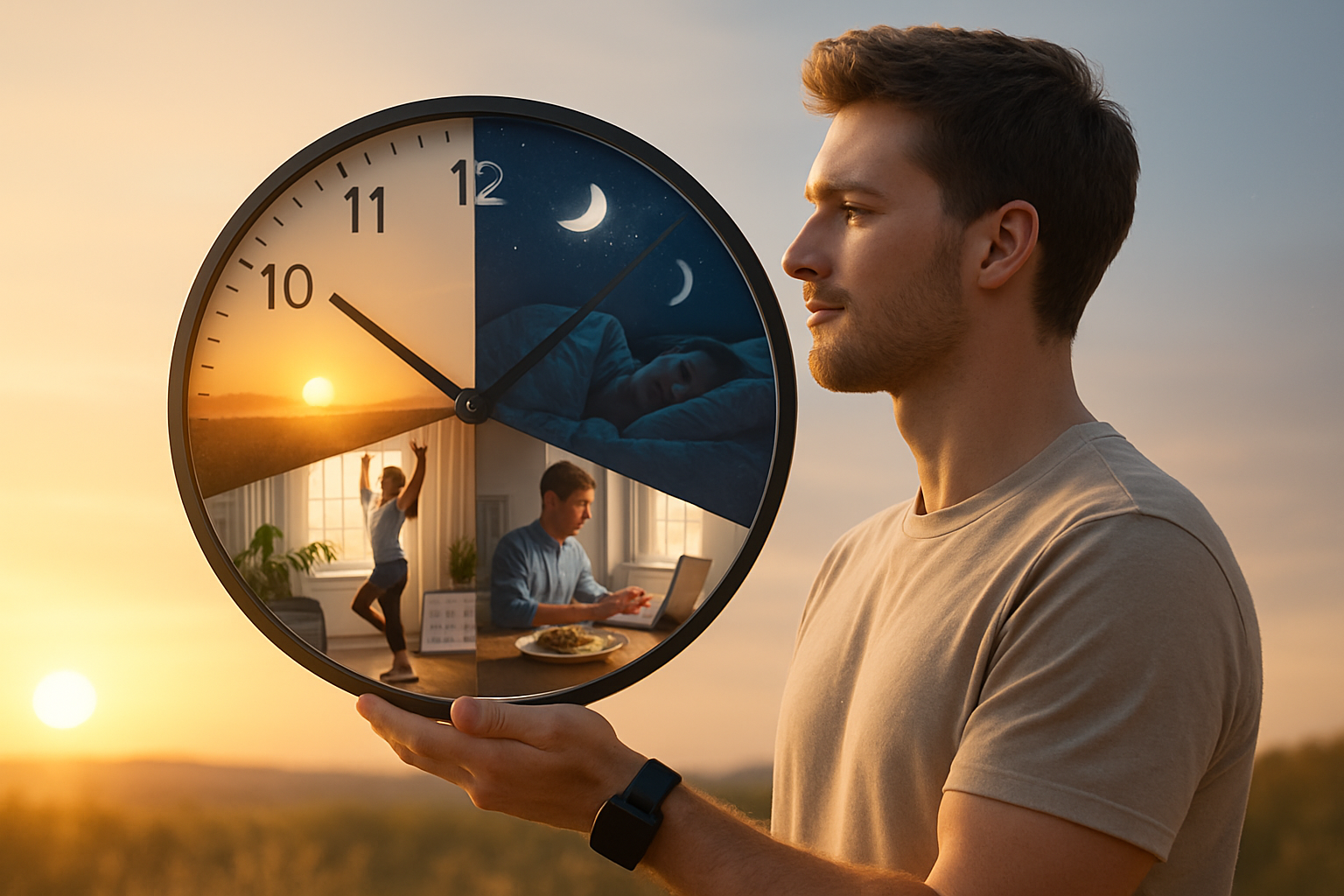Biorhythm Optimization: Aligning Your Life with Nature's Clock
The concept of living in harmony with our internal biological rhythms has gained traction in recent years. But what if we could take this a step further, syncing not just our sleep patterns, but our entire lives with nature's grand cycles? Welcome to the world of biorhythm optimization, a cutting-edge approach to wellness that's redefining how we think about health, productivity, and personal growth.

The Science Behind Biorhythms
Biorhythms are the natural cycles that govern various physical, emotional, and intellectual processes within our bodies. These rhythms are influenced by a complex interplay of factors, including the Earth’s rotation, lunar cycles, and solar activity. While the concept of biorhythms has been around for centuries, modern science is now uncovering the intricate mechanisms behind these natural cycles.
Research in chronobiology, the study of biological rhythms, has revealed that our bodies are governed by multiple internal clocks. The most well-known is the circadian rhythm, which regulates our sleep-wake cycle over a 24-hour period. However, other rhythms operate on longer timescales, such as infradian rhythms that can span weeks or months.
Recent studies have shown that these rhythms affect more than just our sleep patterns. They influence hormone production, metabolism, cognitive function, and even our immune system. By understanding and working with these rhythms, we may be able to optimize our health and performance in ways previously thought impossible.
Mapping Your Personal Biorhythm
One of the most exciting developments in biorhythm optimization is the ability to map and track individual biorhythms. Advanced wearable technology and AI-powered apps now allow us to monitor various physiological markers and identify our unique rhythmic patterns.
These tools can track everything from heart rate variability and skin conductance to sleep quality and cognitive performance. By analyzing this data over time, it’s possible to identify peak periods for different activities and tailor our schedules accordingly.
For example, you might discover that your cognitive performance peaks in the early morning, making it the ideal time for tackling complex work tasks. Or you could find that your physical energy is highest in the late afternoon, suggesting the perfect window for exercise.
Aligning Daily Activities with Natural Cycles
Once you’ve mapped your personal biorhythm, the next step is to align your daily activities with these natural cycles. This process, known as chronotherapy, involves scheduling activities to coincide with your body’s optimal states.
For instance, if your digestive system is most active in the early afternoon, you might plan your main meal for this time. If your body temperature naturally drops in the evening, you could use this as a cue to start winding down for sleep.
This alignment extends beyond just daily activities. Some practitioners of biorhythm optimization even suggest planning major life events, such as important meetings or creative projects, around favorable periods in their longer-term cycles.
The Role of Environmental Factors
Biorhythm optimization isn’t just about internal cycles; it also involves aligning with external environmental rhythms. Factors such as natural light exposure, temperature fluctuations, and even geomagnetic activity can influence our biological rhythms.
Researchers are exploring how manipulating these environmental factors can enhance health and performance. For example, exposure to natural light at specific times of day can help regulate circadian rhythms, improving sleep quality and daytime alertness.
Some forward-thinking companies are even incorporating these principles into workplace design, using dynamic lighting systems that mimic natural light patterns to boost employee well-being and productivity.
Challenges and Considerations
While the potential benefits of biorhythm optimization are exciting, it’s important to approach this practice with a critical eye. Our modern lifestyles often clash with natural rhythms, making perfect alignment challenging.
Social obligations, work schedules, and family responsibilities can all interfere with attempts to live in sync with our biorhythms. Additionally, individual variations in rhythms mean that one-size-fits-all approaches are unlikely to be effective.
It’s also crucial to remember that while biorhythm optimization can be a powerful tool for enhancing well-being, it should not replace traditional medical advice or treatment for health conditions.
Biorhythm Boosters: Quick Tips for Sync Living
-
Start your day with natural light exposure to reset your circadian clock
-
Plan high-focus tasks during your cognitive peak hours
-
Align meal times with your body’s natural digestive rhythm
-
Use relaxation techniques during your natural ‘dips’ in energy
-
Experiment with different exercise times to find your optimal workout window
-
Consider the lunar cycle when planning creative projects or important decisions
-
Adjust your sleep schedule to align with your natural circadian rhythm
-
Pay attention to seasonal changes and adapt your routine accordingly
As we continue to unravel the mysteries of our biological rhythms, biorhythm optimization offers an intriguing pathway to enhanced health and performance. By aligning our lives with nature’s grand cycles, we may unlock new levels of well-being and vitality. While challenges remain in fully implementing these principles in our modern world, the potential benefits make it a fascinating area for continued exploration and personal experimentation.





